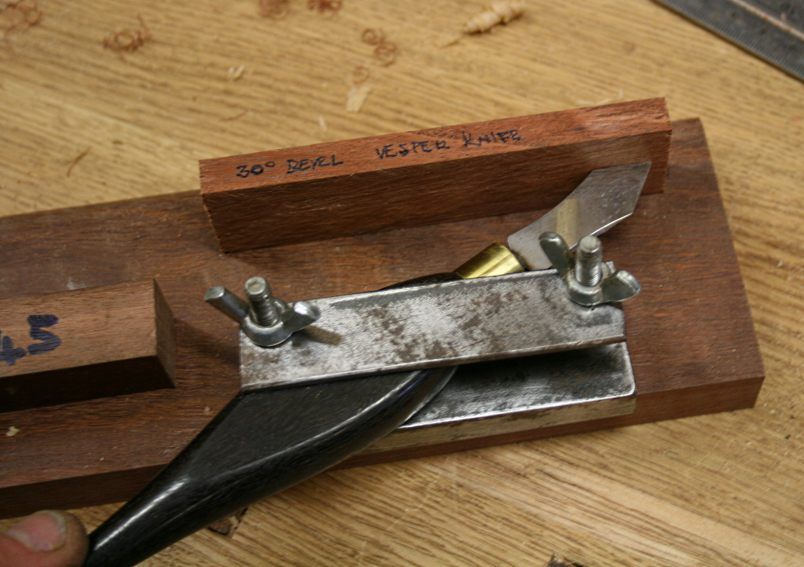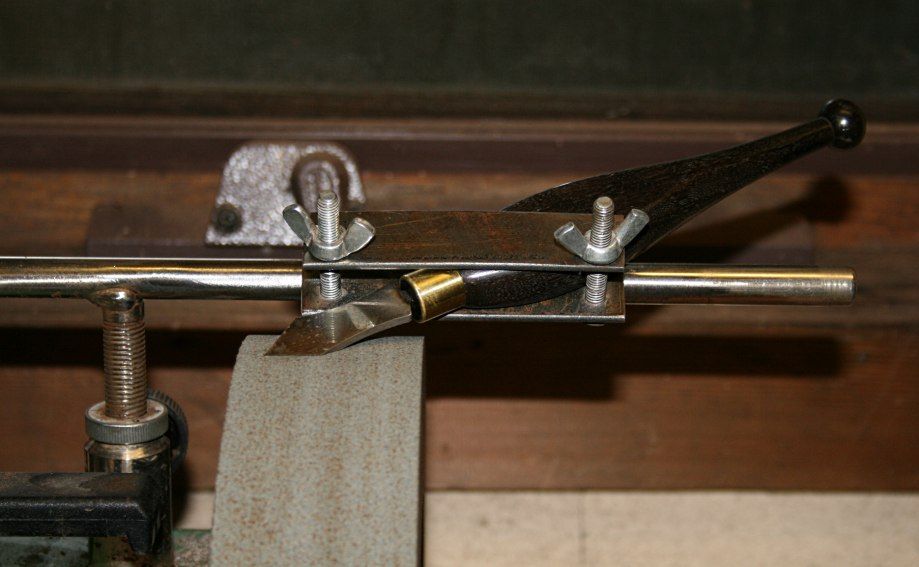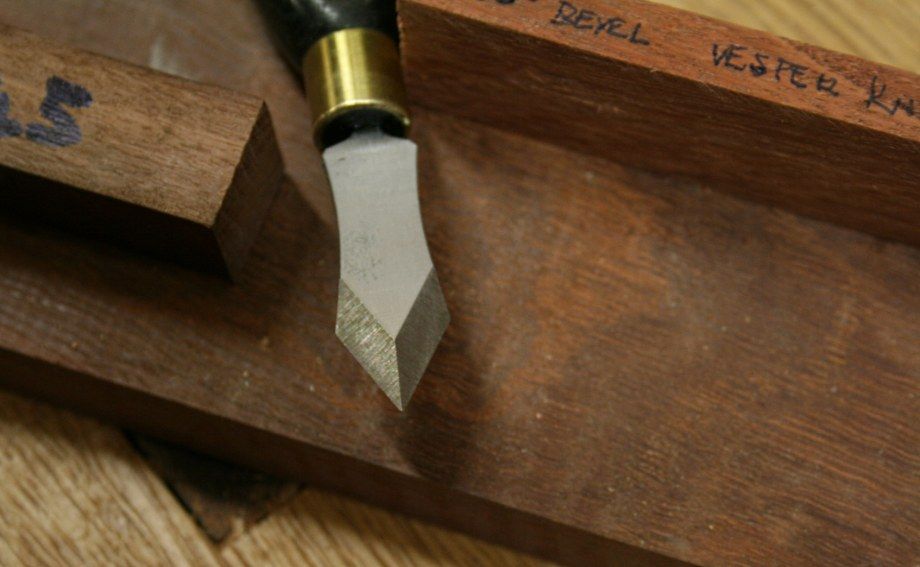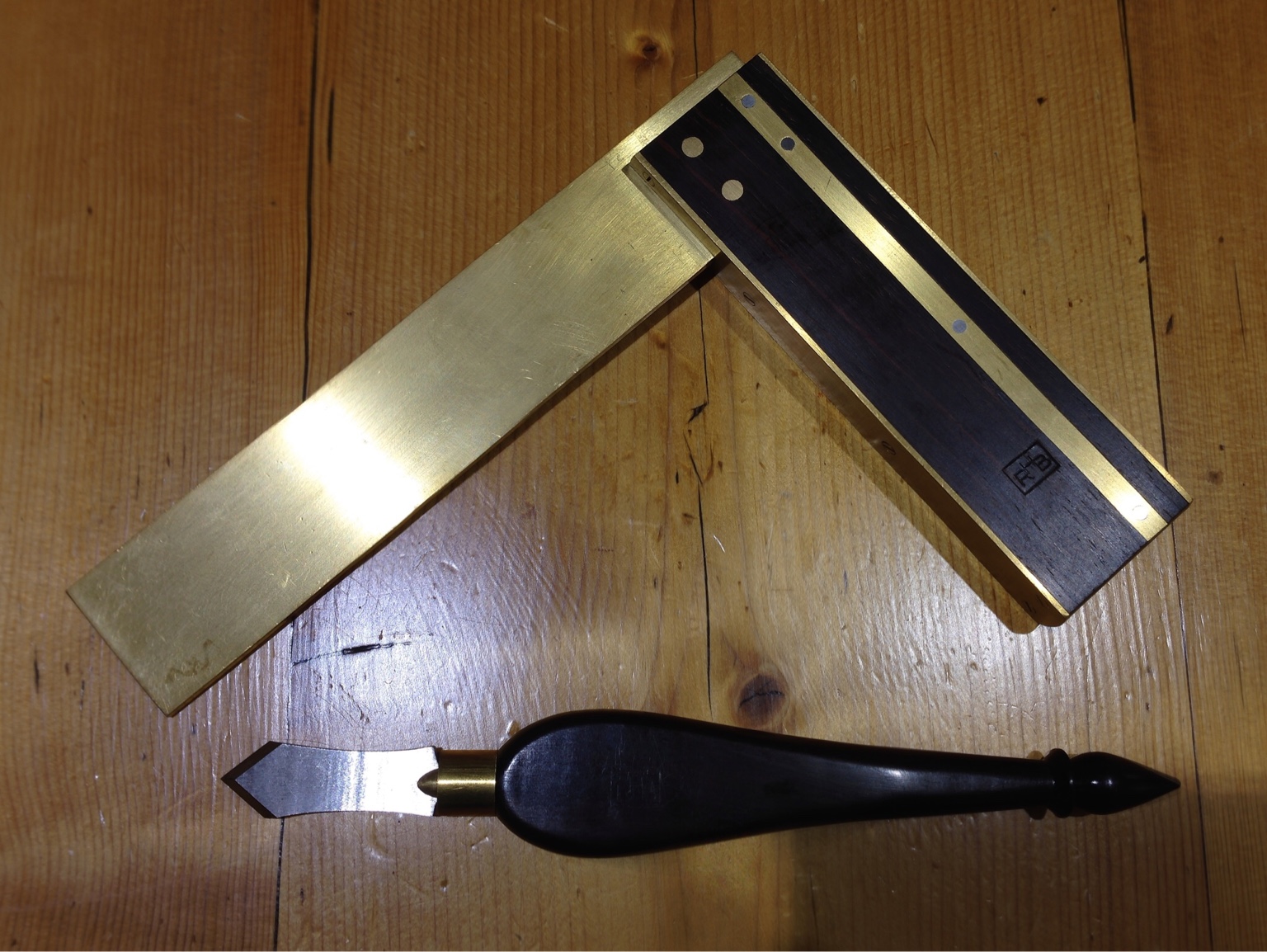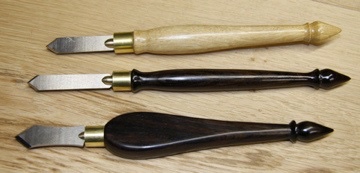Derek Cohen (Perth Oz)
Established Member
We cannot go into Christmas without something to read ... and more so, to tempt you to post a picture or two. This one is easy .. the marking knives/tools that you use and find indispensible .. not the prettiest necessarily, but the most useful, and why.
Here are the ones that live on the wall behind my bench ...
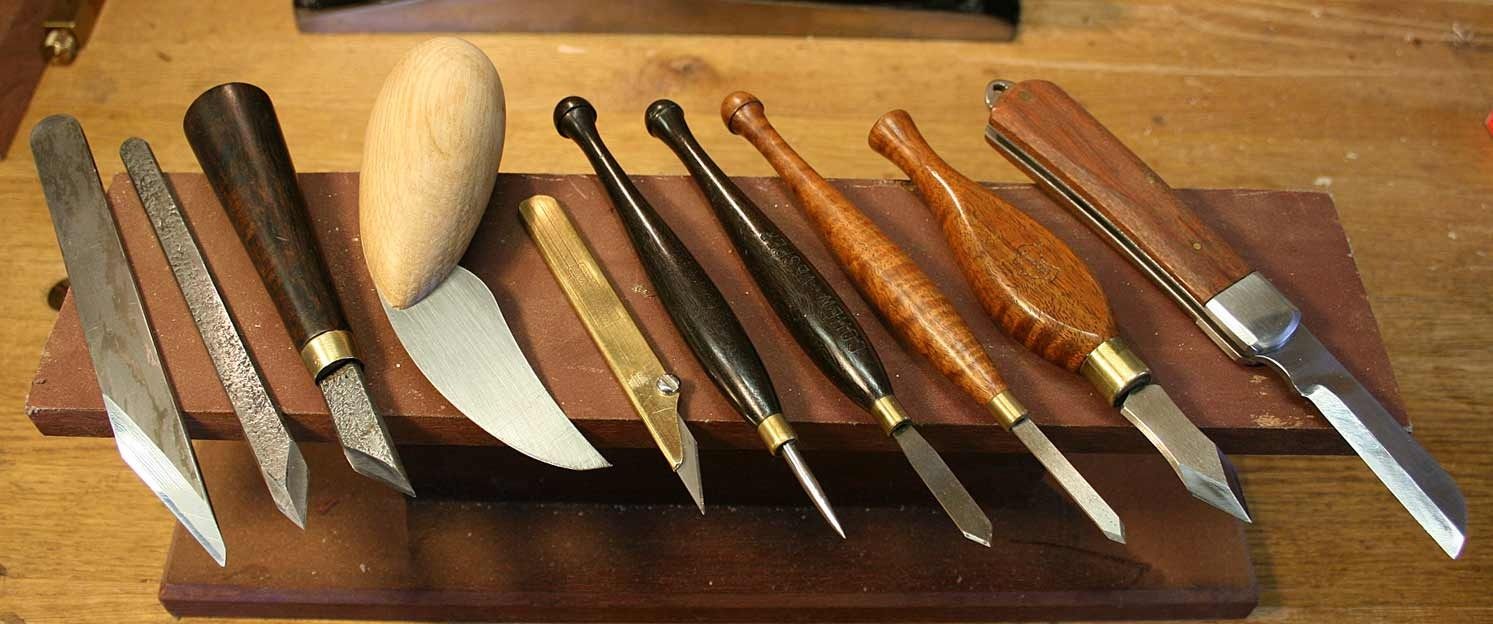
From left to right:
1. A wide Damascas kiridashi. This is a single bevel, but wide enough to flip and strike on both sides. It is a medium heavy blade that will take some pressure. I must admit that I bought it because the steel is so gorgeous, but it works as well as it looks.
2. Skinny kiridaski, with a double bevel, used for sliding against deep and/or narrow walls, such as when transferring 2" deep dovetails.
3. Shopmade heavy duty kiridashi, for use when high downforce is needed, used to strike deeper lines.
4. Glen Drake kerf starter - this is fantastic for scoring the tail lines before sawing. It ensures that the saw blade will follow a line perfectly (when sawing dovetails, all hinges on this line being perfectly square). The "blade" is steel the thickness of the saw plate, and ends in a fine scraper hook.
5. Swann-Morton scalpel. This little brass knife was resurrected a while ago when I finally managed to find blades (now I have a lifetimes worth!). It belonged to my grandfather, who passed away 50 years ago. I acquired a new version recently, when purchasing the blades, and the inscription is different. This is the type of blade made popular by Paul Sellers. Indeed, it is a nice knife to use, but one must remember to angle the tiny bevel so it registers in the vertical.
6, 7 and 8. Three "Cohen" knives (OK, the first is a scratch awl) made by Chris Vesper, but designed by yours truly. Years ago I was making this design for limited sale but mostly as gifts. Chris was looking for a detail knife and asked to use the design. He does a better job than I. I have no financial part in this, so can recommend them to anyone wanting something special. They are really comfortable in the hand, held like a pencil. There are two models, one a standard width (same as a saw blade), which is good for most dovetail transfering or detail marking, and the other is super thin, which is the only knife blade that will get into single kerf "London" dovetails. The scratch awl is the tool to use when marking a measured line. A "dot" is more accurate to align than a slight knife line, which is unlikely to be perpendicular to the rule.
9. Chris Vesper heavy duty knife - this is a double bevel knife that can also be used as a (skew) chisel for cleaning out dovetail sockets. It snuggles into the palm. Very powerful.
10. Lee Valley "Woodworker's Knife". I modified the blade from a hook to straight edge, and honed wide bevels on each side to make it work on both hands. The straight blade enables more than just the tip to enter the wood. The thick blade doubles for riving blanks for draw bore pegs. This is the knife I take to demonstrations.
I hope some of this is helpful. Interested in what you use, and why.
Best wishes for the festive season from Perth, Australia ...
Derek
Here are the ones that live on the wall behind my bench ...

From left to right:
1. A wide Damascas kiridashi. This is a single bevel, but wide enough to flip and strike on both sides. It is a medium heavy blade that will take some pressure. I must admit that I bought it because the steel is so gorgeous, but it works as well as it looks.
2. Skinny kiridaski, with a double bevel, used for sliding against deep and/or narrow walls, such as when transferring 2" deep dovetails.
3. Shopmade heavy duty kiridashi, for use when high downforce is needed, used to strike deeper lines.
4. Glen Drake kerf starter - this is fantastic for scoring the tail lines before sawing. It ensures that the saw blade will follow a line perfectly (when sawing dovetails, all hinges on this line being perfectly square). The "blade" is steel the thickness of the saw plate, and ends in a fine scraper hook.
5. Swann-Morton scalpel. This little brass knife was resurrected a while ago when I finally managed to find blades (now I have a lifetimes worth!). It belonged to my grandfather, who passed away 50 years ago. I acquired a new version recently, when purchasing the blades, and the inscription is different. This is the type of blade made popular by Paul Sellers. Indeed, it is a nice knife to use, but one must remember to angle the tiny bevel so it registers in the vertical.
6, 7 and 8. Three "Cohen" knives (OK, the first is a scratch awl) made by Chris Vesper, but designed by yours truly. Years ago I was making this design for limited sale but mostly as gifts. Chris was looking for a detail knife and asked to use the design. He does a better job than I. I have no financial part in this, so can recommend them to anyone wanting something special. They are really comfortable in the hand, held like a pencil. There are two models, one a standard width (same as a saw blade), which is good for most dovetail transfering or detail marking, and the other is super thin, which is the only knife blade that will get into single kerf "London" dovetails. The scratch awl is the tool to use when marking a measured line. A "dot" is more accurate to align than a slight knife line, which is unlikely to be perpendicular to the rule.
9. Chris Vesper heavy duty knife - this is a double bevel knife that can also be used as a (skew) chisel for cleaning out dovetail sockets. It snuggles into the palm. Very powerful.
10. Lee Valley "Woodworker's Knife". I modified the blade from a hook to straight edge, and honed wide bevels on each side to make it work on both hands. The straight blade enables more than just the tip to enter the wood. The thick blade doubles for riving blanks for draw bore pegs. This is the knife I take to demonstrations.
I hope some of this is helpful. Interested in what you use, and why.
Best wishes for the festive season from Perth, Australia ...
Derek





































